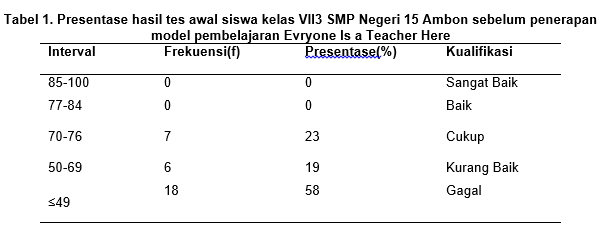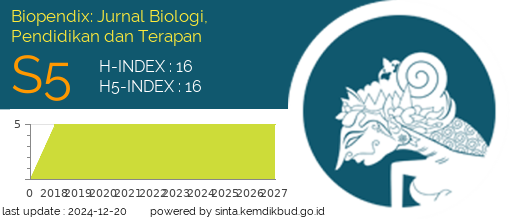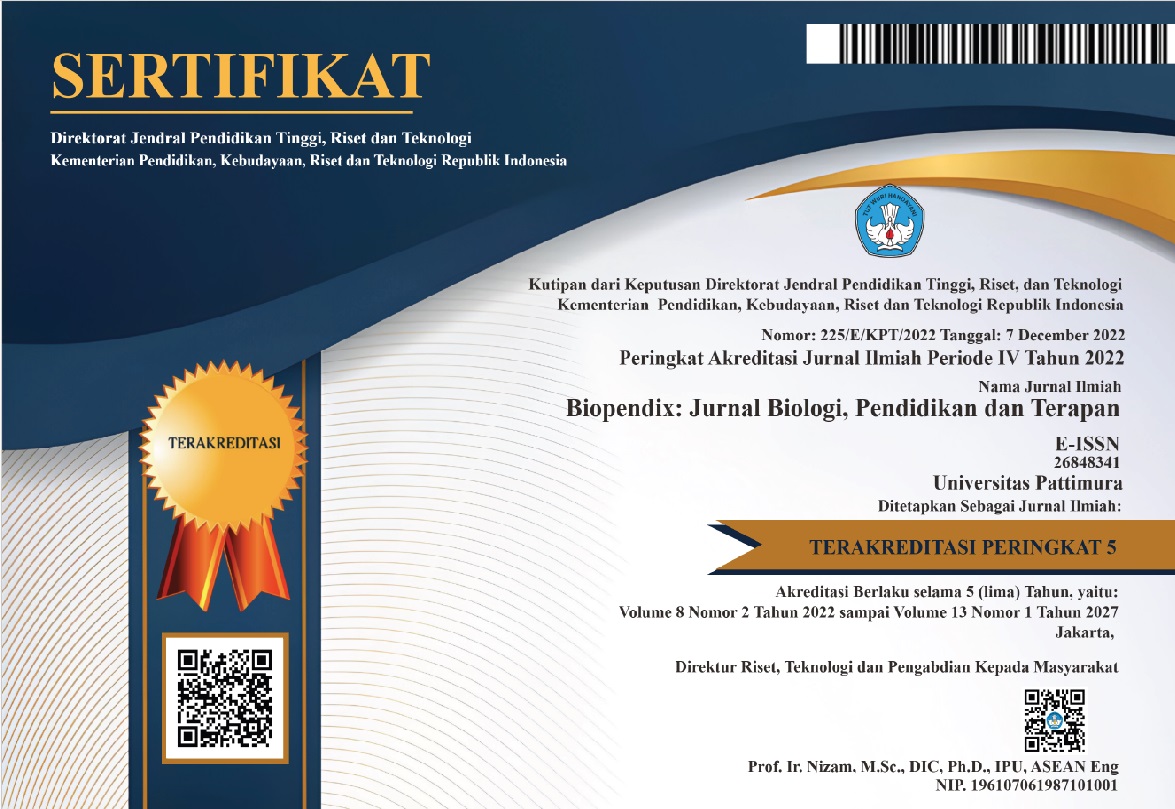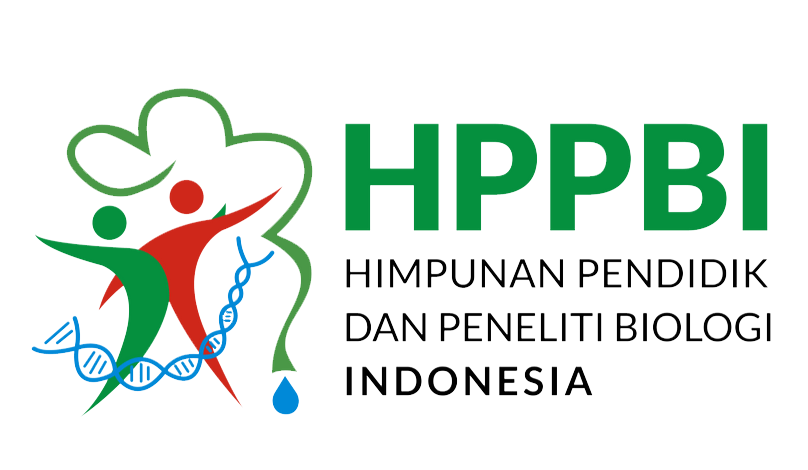PENERAPAN MODEL PEMBELAJARAN EVERYONE IS A TEACHER HERE TERHADAP MINAT DAN HASIL BELAJAR SISWA PADA KONSEP PENCEMARAN LINGKUNGAN DI KELAS VII MTs Al-Ikhlas KAIRATU
Abstract
Background: Everyone Is A Teacher Here Everyone Is A Teacher Here learning model is that everyone
can become a teacher. This model is very appropriate to get class participation as a whole or individually.
This model provides an opportunity for each student to act as a teacher for his friends. With this learning
model, students who have not wanted to be involved will participate in learning effectively.
Methods: This research was conducted in class MTs Al-Ikhlas. The study used descriptive analysis which
was used to determine the students' cognitive, affective and psychomotor learning outcomes.
Results: The results showed that the mastery of students' biology concepts before the application of the
learning model Everyone is a teacher here is said to be very low. This can be seen from the average score
obtained by students in the initial test, which is 42% of the KKM KD specified, which is 70 which is included
in the failed qualification. After the application of learning the formative test results obtained by the students
became better with the average percentage of achievement on the formative test of 90%.
Conclusion: Based on the results of research and discussion, it can be concluded that the application of
the Everyone Is a Teacher Here learning model can improve student learning outcomes on the concept of
Environmental Pollution. This is evidenced by the Final Score that is sufficient for the KKM.
Downloads

Authors who publish with this Journal agree to the following terms:
- Author retain copyright and grant the journal right of first publication with the work simultaneously licensed under a creative commons attribution license that allow others to share the work within an acknowledgement of the work’s authorship and initial publication of this journal.
- Authors are able to enter into separate, additional contractual arrangement for the non-exclusive distribution of the journal’s published version of the work (e.g. acknowledgement of its initial publication in this journal).
- Authors are permitted and encouraged to post their work online (e.g. in institutional repositories or on their websites) prior to and during the submission process, as it can lead to productive exchanges, as well as earlier and greater citation of published works




 2
2






